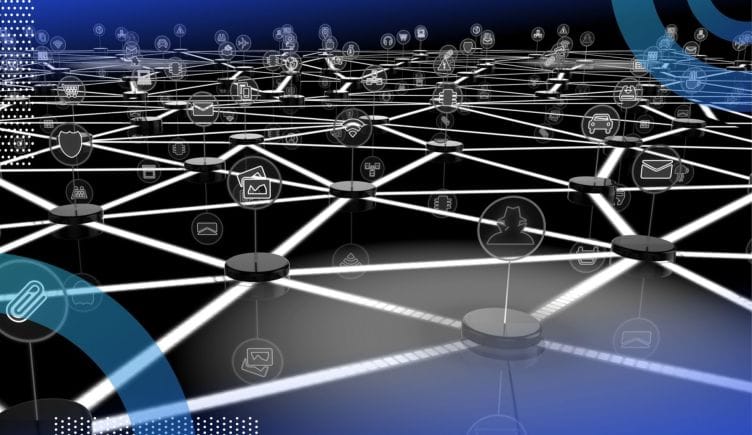Today, businesses are creating digital databases to store their critical information. However, you need different database management systems to maintain your critical information. Some of the popular database management solutions are DMBS, RDBMS, and File System. Knowing the differences between database management systems (DBMS), relational database management systems (RDBMS), and file systems is essential in selecting the best database solution for your needs.
A file system is a simple method of storing and organising data, whereas a database management system (DBMS) provides more sophisticated functionality such as data security, data recovery, and data integrity. RDBMS goes a step further by utilising a relational model that allows for efficient data querying and manipulation. In this article, we will look at the differences between DBMS, RDBMS, and file systems
What Is DBMS
Database Management System (DBMS) is a software system designed to manage databases for various applications. It provides an interface to store, organize, access and update large amounts of structured data stored in databases. DBMS also assists in controlling the security, integrity and availability of stored data while allowing end users to perform their desired operations on the data.
DBMS allows users to define their own relations within a database using a query language like SQL. You can also manipulate or even delete those relations without any need for programming skills. The main features of DBMS software are scalability, availability and performance as most modern DBMS solutions can handle large volumes of structured or unstructured data efficiently.
What Is a File System
A file system is a solution used by computer operating systems to store, organize, access and manage all types of files stored on storage devices like hard disks or removable media such as CDs/DVDs/USBs.
The main feature of file systems is space management as each file occupies a certain amount of disk space which needs to be managed efficiently. It also includes a sharing & locking mechanism so that the same file can be accessed by multiple users at the same time without overwriting each other’s updates. It helps keep track of different folders & sub-folders containing more than one file.
What is RDBMS
Relational database management system (RDBMS) is a type of database management system. It uses the concept of relational tables to store, retrieve and manage data. A relational table can store data in rows and columns and support the relationship between multiple tables. RDBMS allows users to analyze, manipulate or even delete tables or rows from the database.
RDBMS allows for easier organization and management of data within a database by eliminating duplicate data entries. Also, it provides various access techniques for searching, sorting and retrieving information from the database quickly.
Difference Between DBMS Vs RDBMS
DBMS (Database Management System) and RDBMS (Relational Database Management System) are two types of software systems that allow users to store, retrieve, and manipulate data. Here are the major differences between DBMS and RDBMS.
Data Organization:
- In DBMS, data is organized in a hierarchical or navigational manner. Data is stored in a series of records that are linked to one another. Each record has a parent-child relationship with the record above or below it in the hierarchy.
- In RDBMS, the user can organize data in a tabular form. Each table represents an entity, and each row in the table represents an instance of that entity. The columns in the table represent the attributes of the entity.
Data Integrity:
- Data integrity is not enforced in DBMS. Data is entered into the database as it is, without any checks or constraints. This can result in data inconsistency.
- In RDBMS, data integrity is enforced using constraints. Constraints are rules applied to the data to ensure that it is valid and consistent. Constraints can be defined on individual columns or entire tables.
Data Access:
- In DBMS, data access is limited to a single user or application at a time. Multiple users cannot access the same data simultaneously. This can lead to data inconsistencies and conflicts.
- On the contrary, in RDBMS, multiple users can access the same data simultaneously. The system manages concurrent access to the data, ensuring that there are no conflicts or inconsistencies.
Data Relationships:
- In DBMS, data relationships are not explicitly defined. The relationship between data is inferred based on the hierarchical or navigational structure of the data.
- Contrarily In RDBMS, data relationships are explicitly defined using foreign keys. Foreign keys are used to link rows from one table to rows at another table, creating a relationship between the two tables.
Query Language:
- In DBMS, the query language is typically a proprietary language specific to the DBMS. This can make it difficult to port applications between different DBMS systems.
- However, in RDBMS, the query language is SQL (Structured Query Language). SQL is a standardized language that is widely used and supported by different RDBMS systems.
Difference Between DBMS Vs File System
A file system is a method of storing and organizing data on a computer’s storage devices such as hard disk, flash drives, etc. While a database management system (DBMS) is a software system that allows its users to create data, manage, and manipulate databases.
Here are the differences between a file system and a DBMS:
- Data organization: In a file system, data is stored in files and directories with no specific structure, making it difficult to locate data. In contrast, the DBMS system organizes data in tables with specific relations and structures, which makes it easier to find and access the data.
- Data redundancy: In a file system, data redundancy is common as data is often duplicated across multiple files, leading to inconsistencies and data loss. On the other hand, DBMS stores data in a centralized location, and redundancy is minimized through normalization techniques.
- Data integrity: In a file system, data integrity is difficult to maintain as there are no checks to ensure the consistency of data between files. In contrast, a DBMS ensures data integrity through the use of primary keys, foreign keys, and other constraints.
- Scalability: A file system is not scalable, and managing large amounts of data becomes challenging since there is no provision for indexing or searching data. DBMS, on the other hand, is scalable and can handle large amounts of data efficiently.
- Data security: In a file system, data security is limited to file-level access controls. In contrast, DBMS provides robust security mechanisms such as authentication, authorization, and encryption to secure data at the database level.
- Concurrent access: In a file system, concurrent access to files can result in conflicts and data corruption. DBMS, on the other hand, provides transaction management capabilities that ensure concurrent access to data while maintaining consistency.
- Data backup and recovery: In a file system, data backup and recovery occur manually that involve copying files to external storage devices. DBMS, however, provides automatic backup and recovery mechanisms that enable the recovery of data in the event of system failures or disasters.
- Query and reporting: In a file system, querying and reporting requires manual search and filtering of files, which can be time-consuming and error prone. DBMS, on the other hand, provides sophisticated query and reporting capabilities that enable users to retrieve and analyze data easily.
- Application development: A file system provides limited support for application development as data is scattered across multiple files. In contrast, DBMS provides a robust application development framework with tools for data modeling, query optimization, and application integration.
Key Takeaways
- DBMS (Database Management System) is software for creating and managing databases, while RDBMS (Relational Database Management System) is a type of DBMS used for managing data stored in relational databases.
- A File System is used to store, access, edit and delete data on physical devices like hard drives or servers.
- DBMS is used to store critical information while File Systems are mainly used in personal computing applications to store music and videos.
- In comparison to File Systems, DBMS allows users to easily access multiple data sources as opposed to searching through files on the hard drive. It also provides users with more sophisticated data analysis tools that make it easier to find information in large datasets. Finally, DBMS provides security features such as encryption, user groups and user roles which can prevent unauthorized access and manipulation of data.
- RDBMS uses a special query language called Structured Query Language (SQL) which makes it easier for developers to create complex queries for their databases quickly and efficiently. RDBMS also allows developers to create relationships between tables, making them more powerful than traditional flat file databases or File Systems when dealing with larger datasets.



